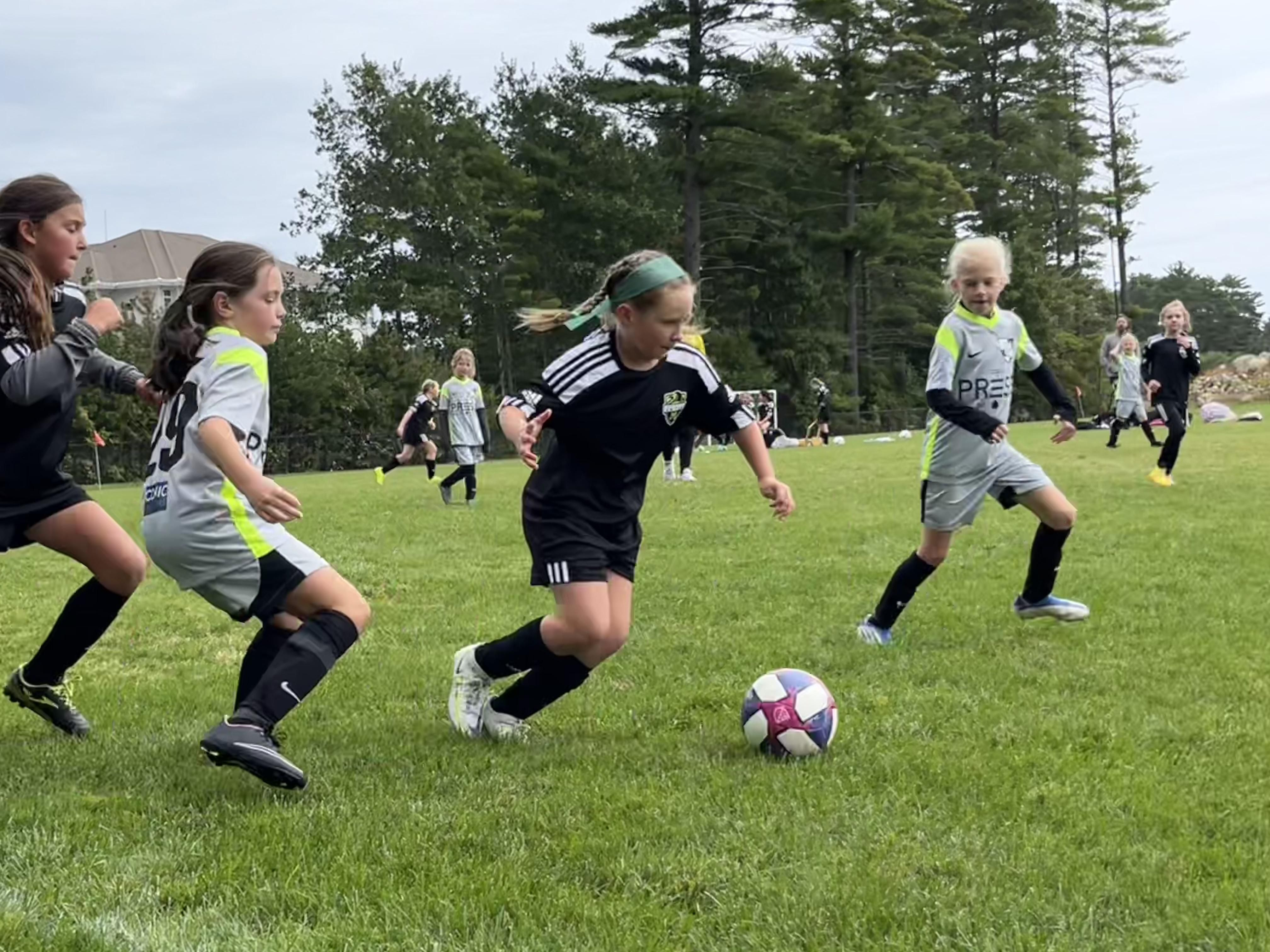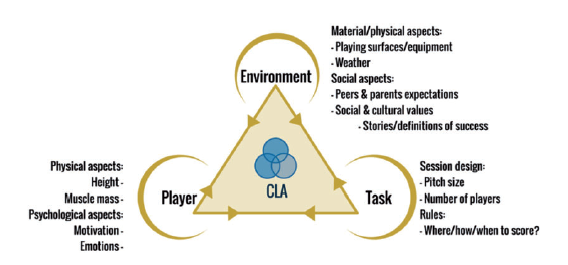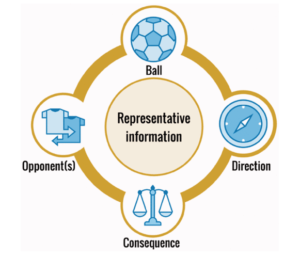Marshfield United Soccer Club (MUSC)

LEARNING
How do players learn and what is the learning process?
“Learning is not the process of repeating a solution, it is repeating the process of finding a solution.”
- We believe that skills are acquired in context.
- The way a player perceives, will determine how a player acts.
- Soccer has a landscape of opportunities to perceive and act on (affordances).

- “With learning and experience, these continuous interactions with affordances of the environment may enrich an individuals effectivities, improving the capabilities, abilities and past experiences that a learner can bring to any performance context.”
Repetition Without Repetition
In an ecological rationale, the development of expertise in sports is shaped by interactions of constraints. Skill acquisition is looked at as the development of a performer environment relationship. Goal directed behaviors can emerge over different timescales due to interactions between constraints.
- Practice: Not best served by repeating a movement again and again.
- Mechanical repetition by rote is a discredited pedagogical approach.
- Rather, practice is the process of coming up with movement solutions to a movement problem.
- Players are decision makers.
More on constraints
Boundaries which shape and guide our behaviors can be broken into three:
- Individual – e.g. height, confidence, experience, psyche.
- Environmental – e.g. weather, size of pitch, time of day, culture.
- Task – e.g. number of players, goals, rules.

The combination of these three constraints produce emergent behaviors.

Does practice look and feel like the real game?
"A key point in using game forms in training sessions is that it "directly talks to the players". This means that feedback is directly "coming from the game forms", so that the coach has to give less feedback from the outside and less instructions thats can reduce the player's breadth of attention". - Mark O' Sullivan
We believe skills are acquired in context. That skilled players act on information. So how else will you develop skilled players if you do not design game representative information into your practices?
"A key underpinning of affordances is perception- action coupling- By building in a range of affordances and enabling young players to explore, we will see the variability so crucial to learning. Equally, we will help players to become "perceptually attuned" to the dynamics of a sporting arena. Just as the child has no need to concentrate (be perceptually tuned in) when play equipment becomes standardized and repetitive, neither does the young player in a learning space that contains repetitive drilling. When they can execute the same pass to the same position every time, without having to worry about opposing players intercepting the ball, their perceptual sensitivity suffers. Equally, a well- designed learning space will demand heightened perceptual sensitivity and in the process help players to (often implicitly) become attuned to key information in the environment that can be used to guide actions - "attunement to affordances" - Mark Upton